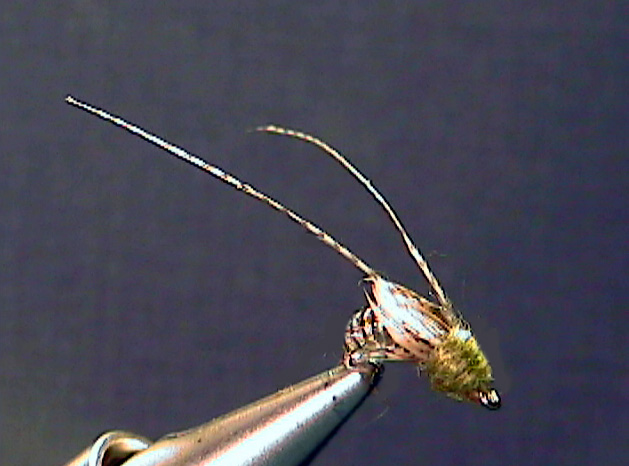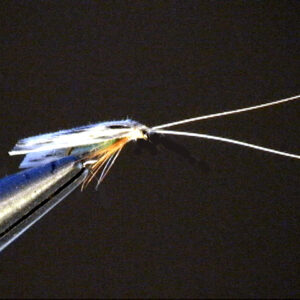Hook Size: 16
The Perfect Fly White Miller Caddis Pupa trout fly imitates the White Miller Caddis larva stage of life. Their larvae live in a case type shelter until the pupa is formed just prior to the hatch. Just prior to the hatch, the pupa comes out of its case and accents from the bottom of the stream to the surface where it emerges into an adult. This makes them easy prey for trout. They should be fished from the bottom to the surface of the water by first allowing the fly to sink to the bottom and then bringing the fly up to the surface using the current and the tip of the rod.
The White Miller larvae are tube makers. The larvae are probably eaten by trout
to some degree but as just to what extent is unknown. I know the larva cases are
shaped long and apparently, or at least may be made in nature that way as a
means of preventing the trout from eating them. So far, from our own
observations, we just haven’t considered it a feasible endeavor to create an
imitation of the White Miller tube cased larva.
Pupae:
The pupae hatch on the surface but do so for the most part in the evenings.
They will start late in the day after the sun has set. If it’s very cloudy or overcast,
they may begin earlier in the afternoon. Our best catches from fishing both the
pupa and adult imitations have come just about the time it is getting dark.
Presentation:
These caddisflies exist mostly in smooth flowing sections of streams, or at least
more so than pocket water or fast water streams. They can be found in the slow
areas and pools of some pocket water streams. Most everywhere we have
encountered them has been in streams with slow to moderate water. Often the
water has a lot of vegetation but I don’t think that’s a requirement for them. We
have found them in some eastern streams that seem to be void of vegetation.
We have had variable results with imitating the pupa. It seems they only emerge
in some streams when it is completely dark. We have not tried fishing at night
during the hatch but we have been told by knowledgeable anglers trout can be
caught at night during the hatch.
We add just a little weight a few inches above the pupa fly. The idea is to imitate
the pupae from the time they swim to the surface of the water until they shed
their pupal shuck. Most of the time the trout will eat the fly when it is near or in
the surface skim.
Present the pupa imitation using a down and across presentation. Mend your line
as soon as the fly hits the water to get the fly down some. Allow the fly to swing
downstream directly below your position much like fishing a soft hackle fly or
swinging a wet fly. Stop the swing and the rod tip at about a 45 degree angle
above the horizon and let the fly come back to the surface. The current will do
this for you. This is the point at which most strikes occur. Sometimes that will take
the fly a few seconds after it reaches the surface but leaving it there very long
doesn’t seem to produce good results.
Copyright 2013 James Marsh

